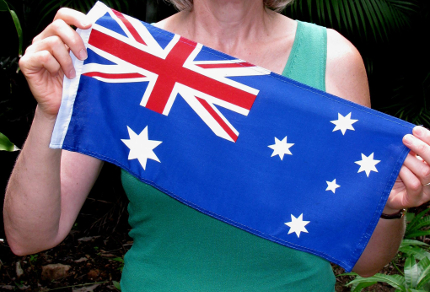In the light of early morning, leaves and twigs lay strewn on the golf course lawn beneath a fig tree, evidence of a feeding binge by red-tailed black-cockatoos. At a street corner, a kookaburra, blue-faced honeyeater, and three magpie-larks perched in close proximity on overhead wires, as though sharing discussions at a dawn conference. Bird songs pierced and floated on air, and I realized, in a moment of startled satisfaction, that I could identify most of them. Does it take three months of life, then, for a place to begin to seep into your ears and brain and soul?
After attending a sombre Good Friday service with Vilis, I lazed about, reading a trashy novel set in the Barossa Valley of South Australia. Within it, I read that winegrowers often plant roses near their vineyards, since roses are susceptible to many of the same diseases as grapes and, thus, serve as good indicators of the vines’ overall state of health.1 A light bulb went on in my head, for in New Zealand wine country on the North Island, Vilis, our sons, and I had noticed red roses blooming at the ends of rows of grapes, which I thought simply meant that the vineyard owner liked roses.
With my interest piqued by this bit of information, I did a little research on the Barossa Valley and learned that it’s the premier winemaking region of Australia.2 Located 60 kilometres northeast of Adelaide, the valley was formed by the North Para River and is approximately 13 kilometres by 14 kilometres in area.2 Photographs showed lush trees tracing the river’s path and shading winery yards, and field after groomed field of grape vines.2
Settled by German and English colonists in the early 1800’s,2 the Barossa now supports 150 wineries3 with names like Balthazar of the Barossa, Chateau Tanunda, Cockatoo Ridge Wines, and Magpie Estate.2 The wine industry is the largest employer in the valley, and wine-tasting tours of the valley are a popular tourist attraction, as is the Barossa Valley Vintage Festival held every couple of years on odd years.2 The valley is best known for its red wines, in particular Shiraz, although Grenache and Cabernet Sauvignon are also produced, as are Riesling and Semillon white wines.2 Much of the Barossa Shiraz goes into the making of Australia’s most famous wine, Penfolds Grange.2
Other photographs showed neat rows of trellised vines, white buckets of dusky purple grapes, huge wooden wine barrels resting on their sides in a winery, and goblets of shimmering red and white wines. Although I’m not a wine drinker, I’d visit the Barossa and take one of those tours, just to soak up the valley’s history and flavour, so different from anything we’ve so far experienced in Australia.
References:
1. Lynne Wilding. Sundown Crossing. 2006. HarperCollinsPublishers, Sydney. p. 162.
2. Wikipedia. Barossa Valley. Updated 12-May-2010. Accessed 19-May-2010. http://en.wikipedia.org/wiki/Barossa_Valley
3. Tyson Stelzer and Grant Dodd. Barossa Wine Traveller. 2009. Wine Press. http://www.barossawinetraveller.com.au/


